Rare are the things that are as unforgettable as the spectacular view of a snowy landscape combined with the clean, crisp air of winter.
However, heading outdoors in winter isn’t as simple as it is during the warmer months – it requires more planning and more preparedness. It goes without saying, but it also requires the right kind of gear.
In this article, I’ll be taking a thorough look at all the clothing and gear an outdoor enthusiast needs to take with himself in order to have a safe, fun, and beautiful winter hiking experience.
But before that, let’s have a look at some important considerations concerning winter hiking as well as the usual dangers that come with it:
Table of Contents
- 1 What You Need to Know About Winter Hiking
- 1.1 Hydration & Food During Winter Hiking
- 1.2 The Dangers of Winter Hiking
- 2 Winter Hiking Clothing & Gear
- 2.1 Winter Hiking Gear Checklist
- 2.2 Winter Hiking Clothing Checklist
- 3 The Conclusion
- 3.1 Share the love:
What You Need to Know About Winter Hiking
As I’ve said, trekking during cold winter months is an entirely different thing than trekking during springtime or summertime.
The reason is obvious – due to the colder conditions, one needs to use different kinds of food, gear, and clothes in order to stay safe while trekking in freezing temperatures.
Hydration & Food During Winter Hiking
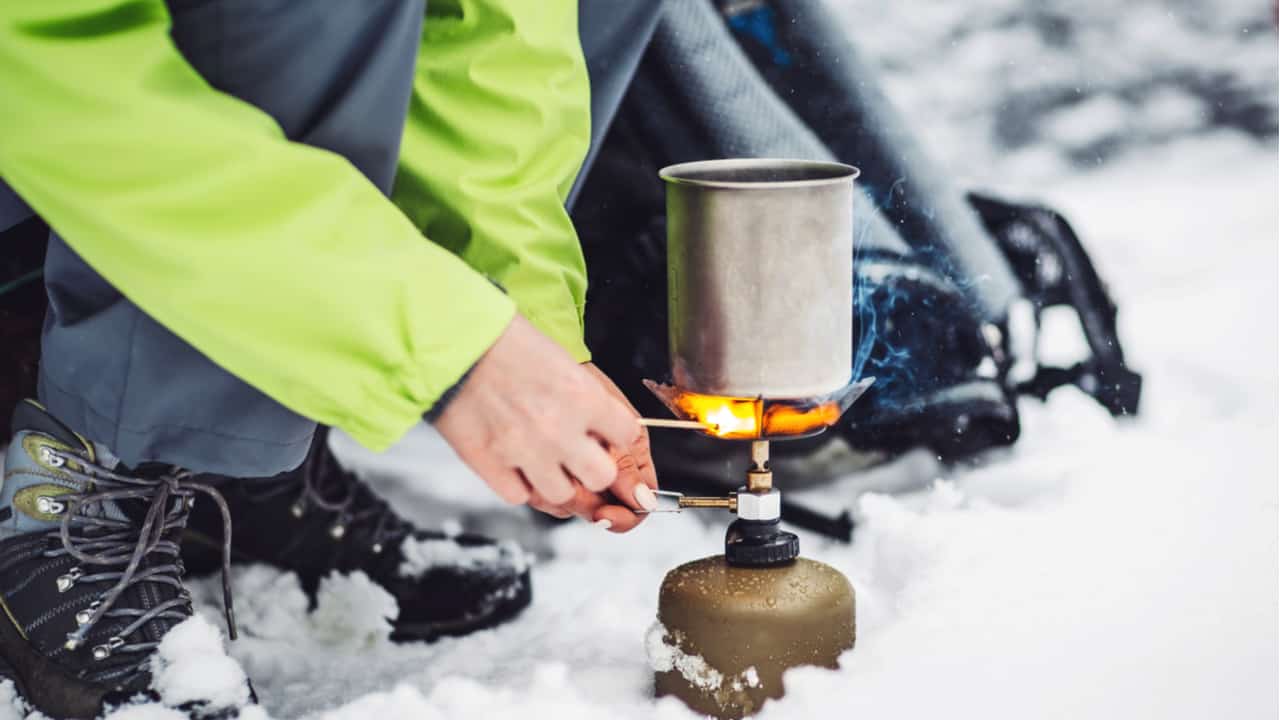
When you’re hiking in wintertime, staying hydrated, as well as maintaining your energy levels is extremely important.
When it’s cold, it’s much easier to forget to drink some water than when it’s hot, even though frequent hydration remains just as important as it is during summer hikes.
Also, let’s not forget about the fact that one’s metabolism can help keep one’s body warm, which is why it’s crucial to continue eating while hiking in order to keep the body temperature and energy up.
However, due to the freezing temperatures that come with winter, there are a few extra considerations you’ll need to keep in mind when it comes to water and food, and those are:
- Are you using a hydration reservoir? If so, consider getting an insulation system for it. Today’s market offers a number of accessories that one can use to easily insulate the reservoir’s tube and stop it from freezing up.
- Those who use water bottles instead should never keep them in the exterior pockets of their backpacks. Keep your bottle inside your backpack rather than on the outside of it.
- Are you going for a day hike during winter? If that’s the case, make sure to take some hot water in a thermos with you. As you can already guess, this will allow you to warm yourself along the way by making and drinking tea.
- Food that freezes easily is something you’ll want to avoid packing. Instead, go with snacks like nuts, energy bars, and chocolate – these are harder to freeze.
- The water and food you’ll be taking with you should be close to your body while they’re inside the backpack (so, close to your back). These things won’t freeze as quickly due to the heat emitting from your body.
The Dangers of Winter Hiking
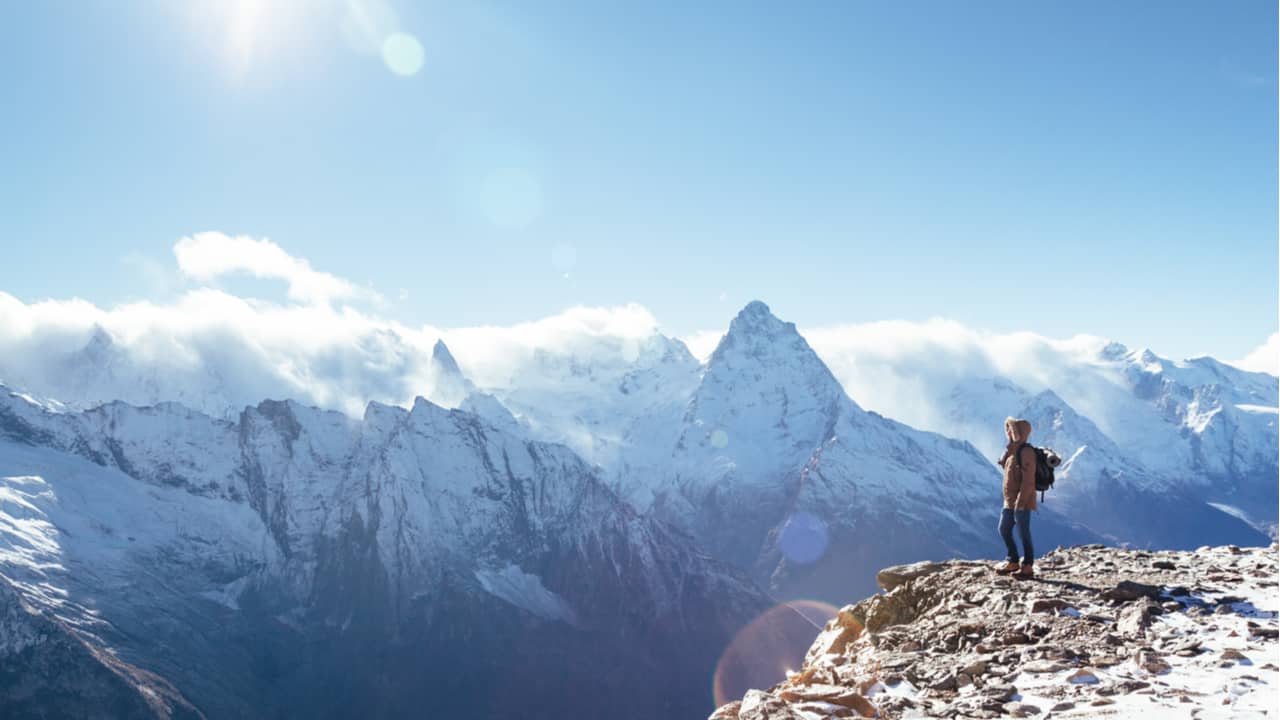
When compared to other seasons, winter is definitely the most dangerous one for hiking enthusiasts.
While this undoubtedly depends on the exact location of your trekking adventure, hiking in wintertime generally means having to deal with harsh conditions and very cold weather. These are, obviously, associated with a variety of potential dangers.
And out of all dangers that come with cold-weather trekking, the two most extreme ones are hypothermia and frostbite. As their name suggests, both of these conditions are caused by freezing temperatures.
Frostbite, for example, is the freezing of body tissue, and it most commonly occurs in ears, toes, and fingers. While it’s not always a life-threatening condition, it can certainly cause permanent damage to those parts of one’s body affected by it.
Hypothermia, on the other hand, is the result of one’s body temperature dropping below 95°F (35°C). If its symptoms are present, hypothermia needs to be taken extremely seriously as it can be life-threatening.
Other risks associated with cold-weather trekking are all kinds of injuries caused by people’s inexperience when it comes to dealing with ice and snow.
Falling and hurting yourself is not uncommon, especially if wintertime hiking is something you’ve never done before or if you’re not adequately prepared.
Fortunately, however, understanding the conditions you’ll be dealing with and knowing what gear to bring can greatly minimize all of these risks.
Winter Hiking Clothing & Gear

Wearing appropriate clothes and packing adequate gear is the best way to ensure that your adventure in the snowy mountains is going to be both safe and enjoyable. The primary aim is to stay dry and warm, as well as to bring all the gear that will keep you safe in snow and ice.
When thinking about which clothes to pack for your wintertime escapade, understanding the layering system is crucial.
Layering is necessary for trekking – when you’ve traversed a few kilometers and you start feeling warm, there’s a pretty good chance you’ll want to remove some clothes – the outer layers.
And if you stop moving altogether or if your body temperature suddenly drops for some reason, you’ll be able to put these outer layers back on in no time.
A basic layering system works like this:
- The base layer – insulating or thermal clothes with moisture-wicking properties. Their job is to keep you dry and warm.
- The middle layer – also known as the “mid-layer”, this is an insulating piece of clothing typically made out of fleece or wool. There are all kinds of mid-layers available on today’s market, ranging from fleece jackets to pullovers.
- The outer layer – also knows as the “shell”, this is typically a waterproof and weatherproof jacket that protects its wearer from the elements.
Besides knowing how to properly layer your trekking clothes, other things you should know about wintertime hiking apparel include:
- Cover yourself up from head to toe – one thing that’s certain to lower your body temperature is having your skin exposed to the cold. Cover everything with appropriate clothes, including head and hands.
- Do not wear cotton – when it comes to cold-weather trekking clothes, this is the most inadequate material. It has no insulating properties and stays wet for too long. A synthetic blend (or Merino wool) works much better in cold weather.
- Consider sun protection – while using sun protection during a wintertime hike may sound like a foolish idea, it actually isn’t, particularly when you’re trekking in snow. Keep in mind that snow reflects sun rays which, in turn, can cause damage to your skin.
- Research weather & trail conditions – knowing all about the conditions you’ll be dealing with during your cold-weather hike is vital. Do your research and find out whether you’ll be traversing snowy and icy areas. It goes without saying, but this will impact what sort of trekking equipment you’ll need to bring, such as gaiters or crampons.
Do your research and find out whether you’ll be traversing snowy and icy areas. It goes without saying, but this will impact what sort of trekking equipment you’ll need to bring, such as gaiters or crampons.
Winter Hiking Gear Checklist
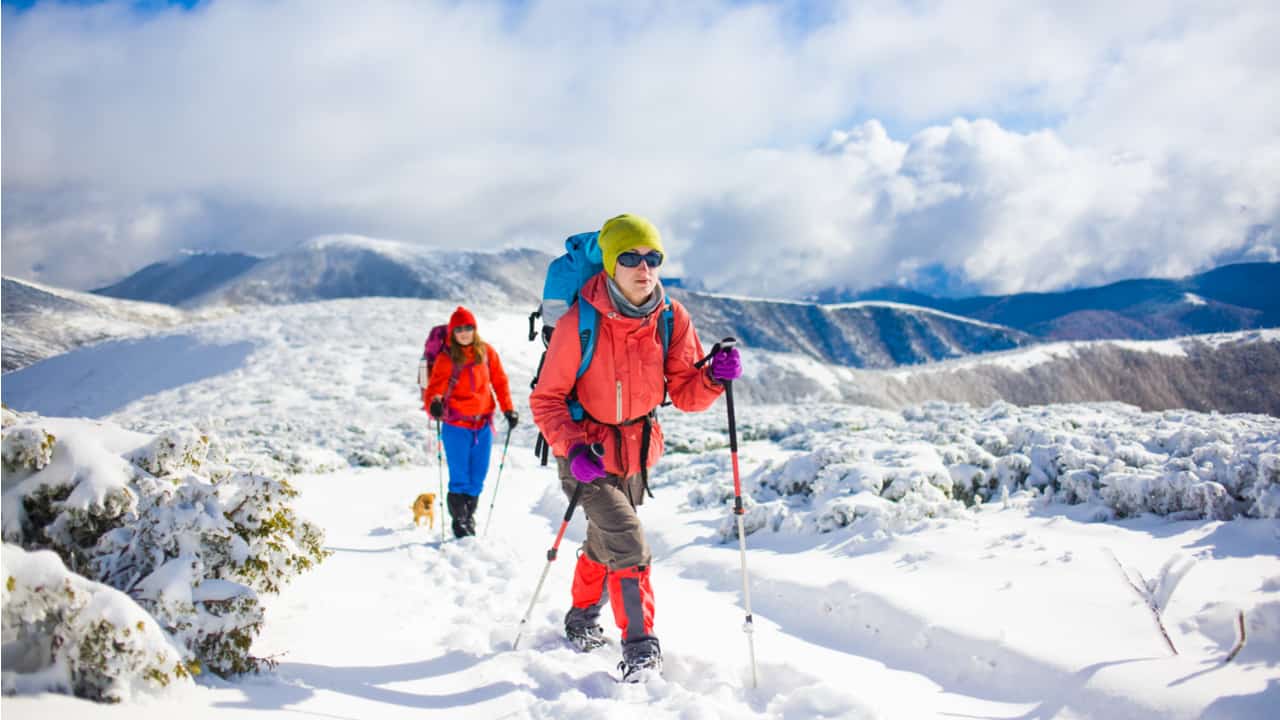
- Backpack/daypack – just like you would in any other season, you will need to carry a trekking backpack during your winter hike. The features and the size of your bag should depend on the difficulty of your walk. In general, a backpack whose capacity stands at 30 liters or more is enough for all the necessary equipment.
- Food & water – It’s crucial to carry enough water and food while you’re trekking. Think about what kinds of food are the best for long walks in freezing temperatures. Also, don’t forget to carry enough water in your drink bottles or hydration reservoir.
- Thermos – a winter hike without a thermos is like a day without coffee. Packing a thermos will allow you to warm yourself along the way by drinking your favorite hot beverage.
- Headlamp – don’t forget that winter days aren’t as long as the summer ones are. You’re always at risk of having to walk one part of your daily hike in darkness. For that matter, always bring a headlamp with you – it will allow you to easily and safely navigate the route in pitch darkness.
- Firestarter & emergency blanket – a fire starter and an emergency blanket are must-have items whether you’re trekking in winter or summer. Obviously, they are particularly crucial for wintertime hikes, as they can literally save your life if something bad happens on the trail.
- Satellite phone of PLB – a PLB (personal location beacon) or a satellite phone are safety essentials. As you can already guess, these devices can be true lifesavers in the case of an emergency. They’re particularly vital for trekkers who head to remote regions without a strong phone network.
- Compass & map – a compass and a map are principal navigation tools that you absolutely have to carry with you while hiking, no matter the season. While you probably won’t be using them as much as your cellphone or GPS, these are crucial backup items that can help you find your way back to civilization in case you get lost and your electronic gadgets run out of juice.
- First aid kit – this is, obviously, one of the most important items you can bring with you on a wintertime hike. You can either buy a fully-stocked first aid kit or make one by yourself with adhesive plasters, sterile gauze pads, pain relief pills, antiseptic, medical tape, and bandages.
- Other items – Other items you may want to pack for your winter hike include things like a pair of sunglasses (more on that later), a power bank, whistle, lip balm, garbage bag, multi-tool, bear spray, and, of course, your toiletries.
Winter Hiking Clothing Checklist
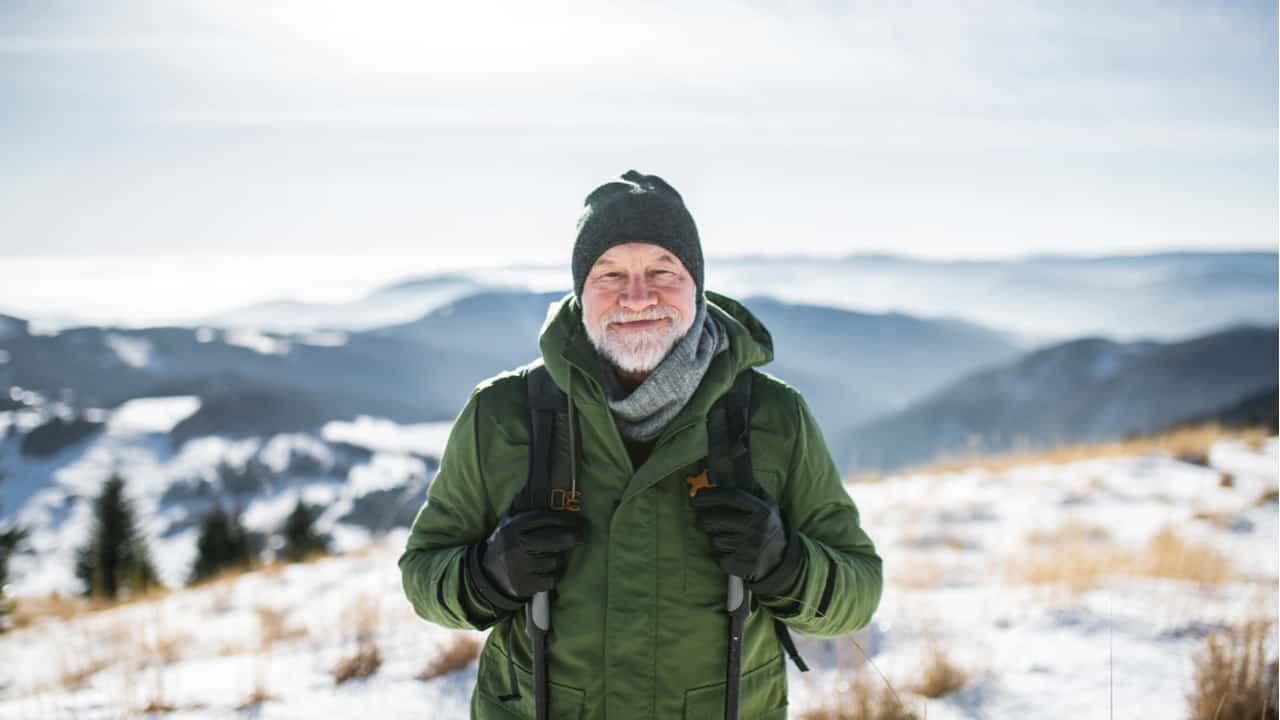
- Footwear – well-made and water-resistant footwear is undoubtedly among the most crucial items one can bring to his wintertime trekking adventure. Are you expecting to encounter deep snow during your hike? If that’s the case, your best bet is to buy a pair of insulated boots.
- Pants – When it comes to pants for wintertime trekking, there are typically two options available. The first of these two options are softshell pants, which are, as their name suggests, more flexible and breathable, and can also be water-resistant. Unfortunately, they’re not the best choice for outdoor escapades that include heavy rainfall and intense winds. For such occasions, hardshell pants are a much better choice – they are completely windproof and waterproof. Most folks who head into the backcountry during cold winter months usually invest in both options and often combine them, putting hardshell pants over their softshell pants. This can come in very handy when trekking conditions turn really bad. Make sure to check out my post on the best softshell pants.
- Gloves – as you can already guess, gloves are an extremely important part of wintertime trekking apparel. In cold weather, the risk of blood circulation in your hands dropping down is always there, and it can lead to dangerous frostbites. In my opinion, one should never head into the backcountry during winter without at least two pairs of gloves. You’ll be able to use one pair as a base layer for insulation and warmth, and the other one as a sort of waterproof shell when you have to deal with high winds of heavy rain.
- Hat – a beanie or a wool hat is something you will definitely want to bring to your winter hike. Remember – it’s very easy to lose a huge amount of heat through your head. For that matter, get yourself a well-made fleece or wool hat that will keep your body temperature up. Fortunately, today’s market offers a massive variety of hats and beanies for winter, with some of them being very thick and more than capable of protecting your head and ears from freezing temperatures.
- Jacket – a well-made, quality jacket will be your outer layer while exploring the snowy forests and mountains. In my opinion, the best piece of apparel for such escapades is an insulated down jacket. These kinds of garments provide a fantastic performance when it comes to trapping body heat and keeping their wearers warm. There are different types of down available, with their ratings showing you what kind of temperatures they are capable of dealing with. Another jacket, one that’s waterproof and windproof, is a must-have as well – you’ll be using it as your outer shell. While it’s true that these garments aren’t as well-insulated or warm as their down-made cousins, they can keep you dry by protecting you from the elements, which is, after all, just as important if you want to stay warm.
- Thermal clothing – base layers, or thermals, are made to keep their wearers warm and dry. While it’s true that they’re not very thick, they tightly grip your body and typically have moisture-wicking properties. Most brands sell thermals that are made specifically for trekking – get yourself both the upper and lower body clothes of this type.
- Socks – like all other clothes made for this activity, hiking socks are generally tougher and made out of special wool blends. When you’re trekking in freezing conditions, it’s vital that your feet stay comfortable and warm – you want to maintain proper blood circulation and prevent blisters.
- Scarf – as far as I’m concerned, scarves can be somewhat annoying at times, but they’re still a great addition to one’s trekking gear. Do standard scarves irritate you while you’re exploring the backcountry? If that’s the case, go for a neck warmer or a buff that’s similar to a balaclava. A piece of clothing of this type should properly cover your neck and prevent the body heat from escaping.
- Goggles or glasses – as I’ve already said, sun protection certainly isn’t what most people think about when it comes to winter hiking. However, it’s still quite important. Keep in mind that snow reflects the sun’s rays, and that can present a major issue when you’re hiking for miles through snowy terrain. Fortunately, the solution to this problem is very simple – get yourself a pair of polarised sunglasses. These will protect your eyes from the glare and make the whole journey much more enjoyable.
- Gaiters (optional) – those who want to stop the snow from getting inside their trekking shoes should get themselves a pair of high gaiters. Another advantage that comes with wearing gaiters is that this kind of apparel can act as an extra layer of insulation for one’s legs. But still, they are completely optional and not really necessary for winter hiking.
- Snowshoes (optional) – Are you heading into a region that is completely covered with deep snow? If that’s the case, getting yourself a pair of quality snowshoes may be a wise idea. As they increase the total surface of one’s boots, they allow trekkers to walk on snow without having to worry that they’re going to sink through it.
- Shoe crampons/spikes (optional) – these are something you’ll need if you’re expecting to encounter a lot of ice and particularly rocky terrain. They’re available in a range of sizes and types (such as microspikes) and can be of great help on difficult terrain.
The Conclusion

Winter trekking can definitely be very enjoyable – you just have to bring adequate equipment and properly prepare yourself for the hike. Hopefully, this guide will help you get all the right clothes and gear and have an unforgettable (and safe!) time on the snowy trails.
 Leslie Gilmour
Leslie GilmourI love hiking. From the Camino de Santiago to the West Highland Way in Scotland or simply a great day hike on the weekend. Hiking refreshes me, my mind, and keeps my body reasonably fit. So far I have walked three Camino routes and many other long distance hikes in the UK, Canada, and around the rest of Europe. One of the best was my hike up Ben Nevis.
Share on Facebook Share on Pinterest Share on Twitter Share on Email Junyuan Bags
Ten articles before and after
Backpacking Quilt vs Sleeping Bag: Which is Better for Camping
Down vs Synthetic Sleeping Bag – Which is the Best?
12 Best Double Sleeping Bags for 2022 [Camp and Backpacking]
Bedroll vs Sleeping Bag: What is the best to buy for 2022?
Best Backpacking Backpacks for Hiking in 2022
14 Best Backpacking Water Filters and Purifiers for 2022
How to Wash a North Face Backpack
I am going on a journey and I am taking with me… an Eastpak Tranverz

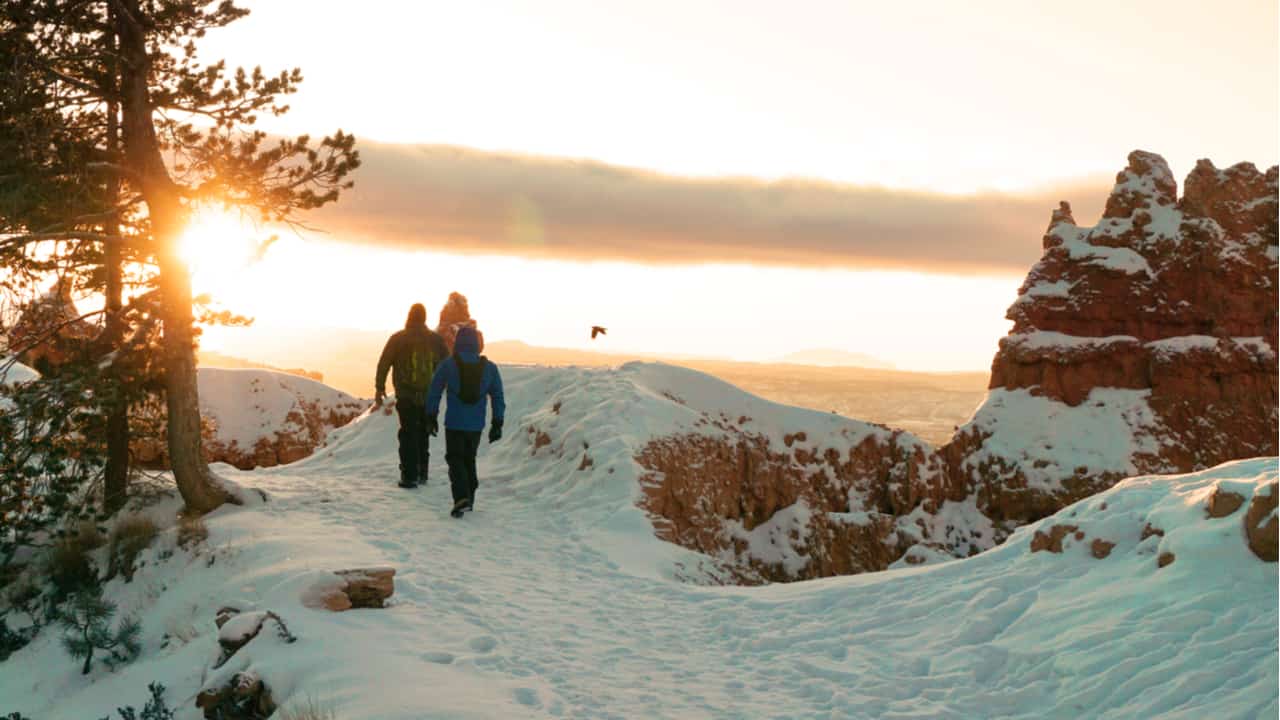



 Mobile/What's App/Wechat
Mobile/What's App/Wechat E-Mail
E-Mail ADD
ADD




